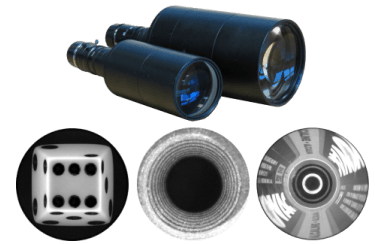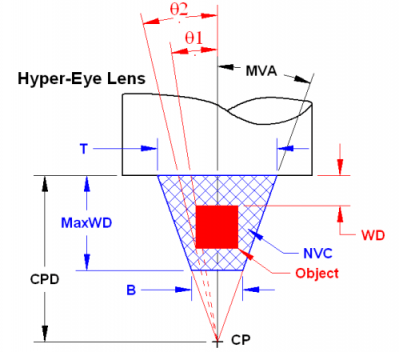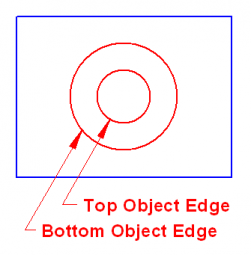why hypercentric?
What the heck is a hypercentric lens?
A hypercentric lens provides a converging view of an object, letting you see the top and all around the sides simultaneously. Some call it a pericentric lens. Either way it's a remarkable new tool for your machine vision inspection challenges.
Hyper-EyeTM also has another trick up its sleeve. Add a spacer ring, and now you have a long working distance borescope. Take a look at the 1/4-20 threaded hole in the above image. The extra working distance makes illumination much easier.
Whether you're inspecting caps, containers, batteries or bolts, Hyper-EyeTM lets you see everything with one camera. Achieve a unique perspective with Hyper-EyeTM hypercentric/pericentric lenses.
Here's how they work!
Hyper-Eye receives rays of light as if they all originate from a single Convergence Point (CP). The distance from the front of the lens to CP is cleverly called the Convergence Point Distance (CPD).
Any object that is within the Near Viewing Cone (NVC) can be focused onto the camera detector. Rays of light that are collected at smaller angles (q1) are imaged closer to the center of the detector. Those collected at higher angles (q2) are imaged farther out. A cylindrical object might be imaged like this:
The NVC is an inverted, truncated cone (shown as the blue hatched region) that has different dimensions for each different lens model. Its dimensions are T for the top diameter, B for the base diameter, and the height called the Maximum Working Distance (MaxWD). Anything outside these diameters won't be viewed. Anything farther than MaxWD can't be optimally focused. (There's an exception when Hyper-Eye is used as a long stand-off borescope, imaging areas well beyond the CP.)



